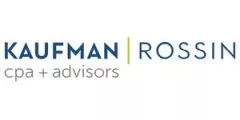- within Government and Public Sector topic(s)
- with readers working within the Basic Industries and Insurance industries
Section 1202 of the Internal Revenue Code has long offered compelling tax benefits, but recent changes have made Qualified Small Business Stock (QSBS) even more attractive to investors. While the original law created significant tax savings opportunities, its strict eligibility requirements often limited its use. Now, thanks to the newly passed 2025 Tax Act —known by some as the "One Big Beautiful Bill"—QSBS is poised to become an even more powerful tool for entrepreneurs and investors alike.
What is QSBS?: A quick recap
The federal tax code provisions around QSBS were designed to stimulate investment in small and early-stage companies by offering significant tax breaks to investors. Under the existing rules, investors who acquired QSBS after September 27, 2010 could exclude 100% of capital gains on the sale of that stock from federal income tax—capped at the greater of $10 million or 10 times the investor's adjusted basis. For earlier acquisitions, the exclusion percentage was lower but still significant.
However, while the tax benefit was substantial, navigating the QSBS requirements such as holding period rules, company qualification criteria, and redemption restrictions was often complex and restrictive.
Key enhancements under the new law
The new legislation has introduced several meaningful improvements to Section 1202, expanding access and amplifying benefits for qualifying investors:
- Reduced holding periods with tiered exclusions
Previously, investors were required to hold QSBS for more than five years to qualify for any tax exclusion. The new law introduces tiered benefits, allowing investors to exclude:
- 50% of gains after holding for 3 years
- 75% of gains after 4 years
- 100% after reaching the full 5-year holding period
This change makes QSBS more flexible and accessible, especially for those who may need to exit their investment sooner.
- Higher gain exclusion cap
While the previous QSBS cap limited exclusions to the greater of $10 million or 10 times the adjusted basis of the investment, the new law raises that threshold to $15 million or 10 times basis—whichever is greater.
This higher limitation increases the benefit for founders and early investors who often invest at low cost but realize significant gains upon exit.
- Expanded eligibility for companies
Under prior law, a company qualified only if its gross assets did not exceed $50 million at the time of stock issuance. The new law raises that threshold to $75 million, broadening the range of businesses that can issue QSBS and attract investors looking for tax-efficient opportunities.
What this means for investors
These enhancements are likely to increase interest in QSBS-eligible investments, especially among angel investors, venture capitalists, and startup founders. The reduced holding period and higher exclusion cap make it easier to access tax benefits without the five-year wait. And by allowing larger companies to qualify, the updated rules open the door for more established startups to take advantage of QSBS incentives.
That said, QSBS remains a complex area of the tax code. Holding period tracking, stock issuance documentation, trade or business qualification, and redemption restrictions still require careful attention. As the rules become more generous, so does the need for meticulous planning and documentation.
The new rules apply to shares issued after the applicable date, meaning on or after July 5th. If you currently own QSBS subject to the pre-enactment limits but want to take advantage of the increased exclusion and phaseouts, consider the Section 1045 rollover provision. This allows taxpayers to defer capital gains from the sale of QSBS they've held for more than six months, by reinvesting that gain into new QSBS within 60 days. Why does this matter? Because the new stock would fall under the updated provisions and could be eligible for the higher exclusion (up to $15 million, instead of $10 million), as well as the new phase-out exclusion.
Professional guidance is still essential
With the new QSBS rules now in effect, this is a critical time to assess your eligibility with experienced tax professionals and explore how these enhanced benefits can support your investment or exit strategy. Whether you're issuing stock or evaluating a potential gain, proactive planning can make the difference between missing out and maximizing tax savings.
Kaufman Rossin's tax team is here to help you navigate the updated QSBS landscape and develop a strategy tailored to your investment and business goals.
The content of this article is intended to provide a general guide to the subject matter. Specialist advice should be sought about your specific circumstances.



